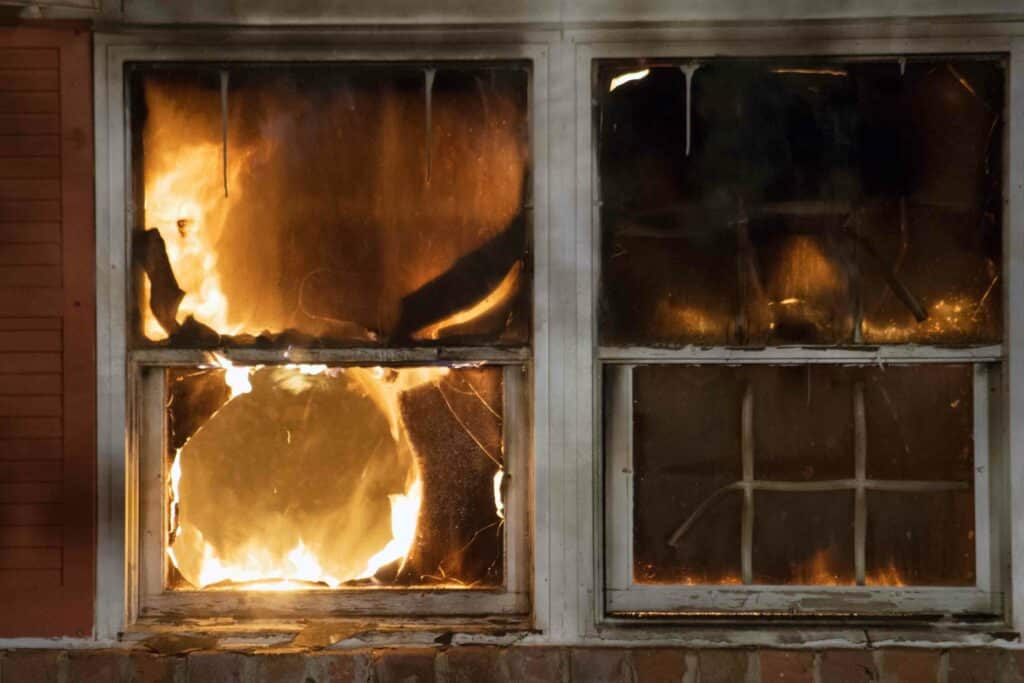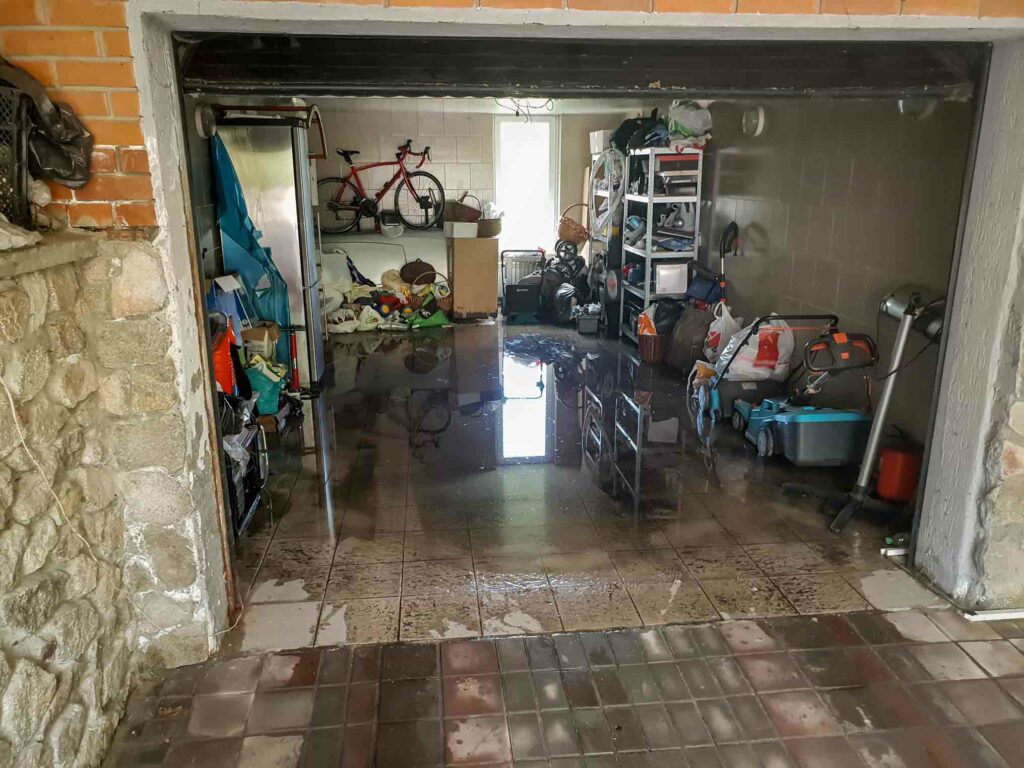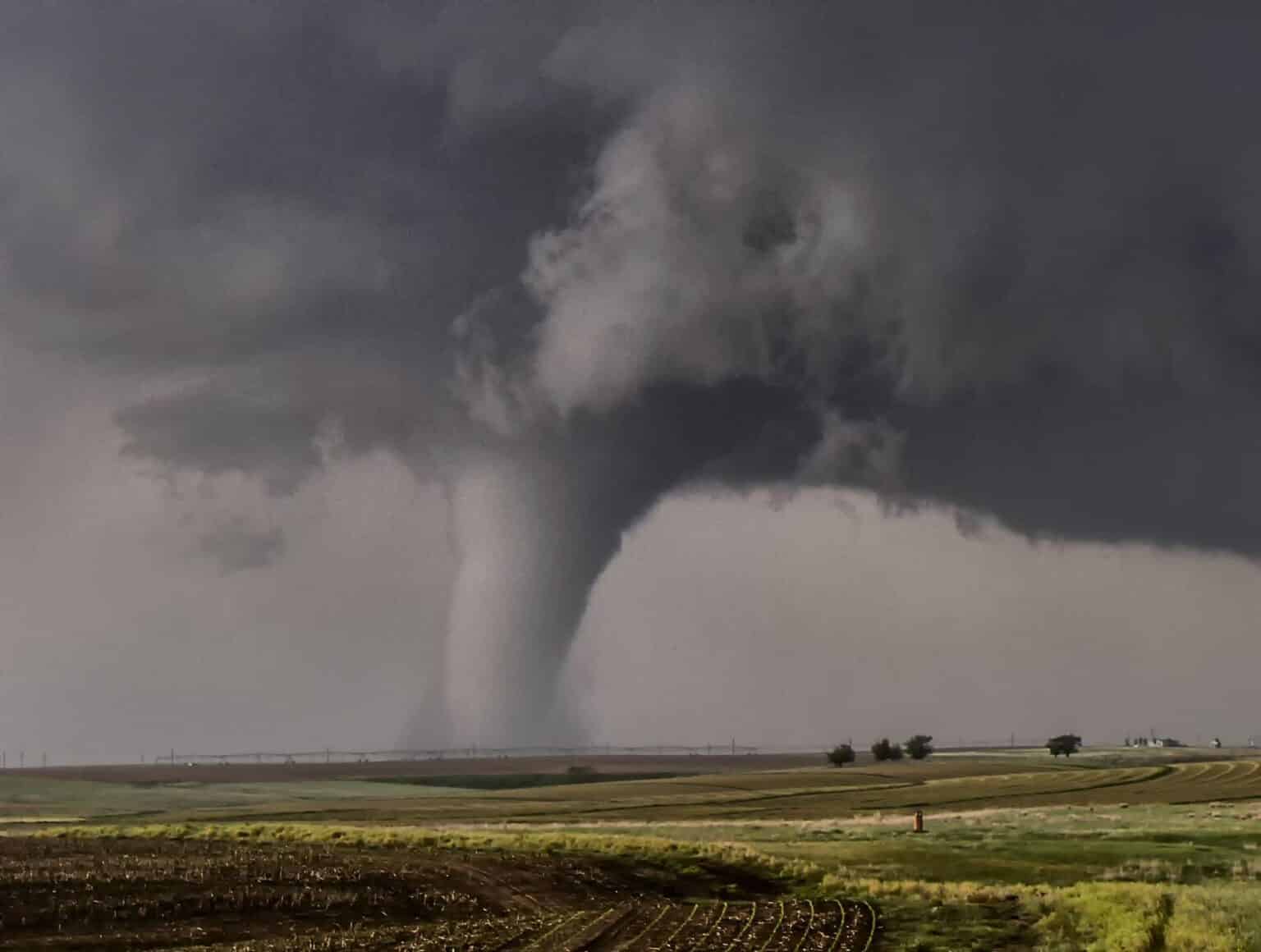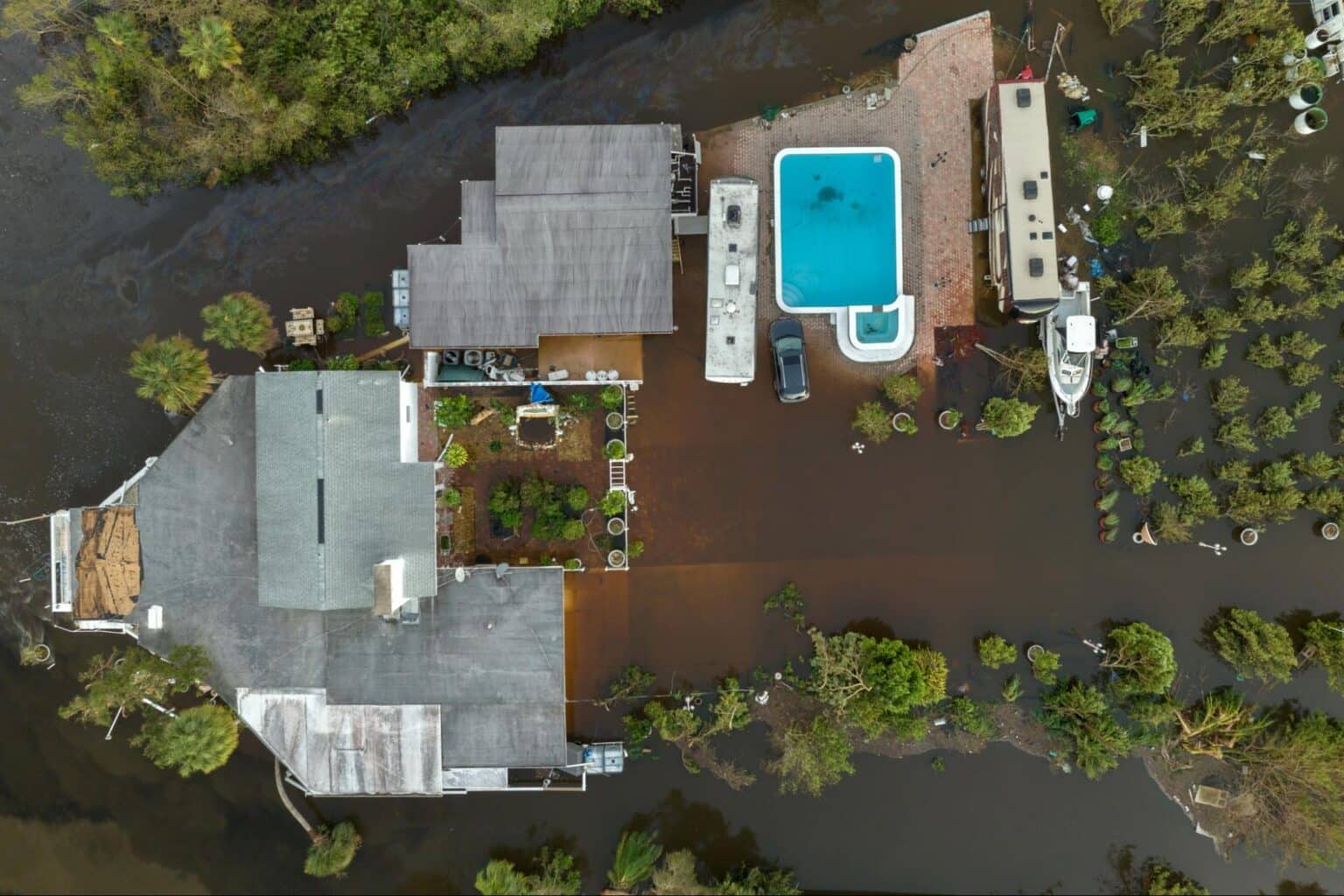Reading through the fine print of an insurance policy can be a time-consuming and complex process. But it’s essential to read in order to know what your homeowners insurance policy entails.
Even if you’ve purchased insurance to protect your home, there are certain liabilities and damages that may not be covered by a standard home insurance plan. It’s important to have these conversations with your insurance agent to determine what is covered and what is not based on your specific needs. Things like war damage, for example, are never going to be covered under a standard home insurance plan but some things might require special endorsements to be added to your plan if they are not already covered—such as:
- Natural disasters like earthquakes, floods, sinkholes, and mudslides can often be covered with endorsements to your standard insurance plan.
- Negligence damages by having risky items like trampolines. It’s important to inform your agent if you have risky items such as trampolines or diving boards.
- Most policies will have a prohibited dog list. If you own a dog that is considered an aggressive breed, you should ask your agent if the breed is on that list.
- Loss of valuables, depending on the insurance that has occurred.
To develop a complete understanding of types of homeowners insurance, you must be aware of what is often covered, what requires an add on, and what works best for you.
Types of Insurances for Homeowners
As you research to find a plan, you’ll find that there are several kinds of insurance policies for homeowners. Each one has a different scale of coverage.
Each type is known as an HO with different numerals depending on what the insurance policy covers. Here’s a quick breakdown of some common policies and what they entail:
- HO1 insurance. It’s referred to as a named-peril policy and includes ten perils only. It’s suitable for vacant or older homes.
- HO2 insurance. Also known as mid-range named-peril policy or broad form, it includes sixteen new perils, including the perils of HO1. It’s also suitable for vacant and older homes.
- HO3 Insurance. This insurance is known as an open-peril policy, and it essentially covers everything. All the perils that aren’t included are explicitly mentioned. It’s the most common form of insurance chosen by homeowners in the U.S.
- HO4 Insurance. This insurance is meant for anyone renting a home, an apartment or one side of a duplex.
There are other forms besides HO1, HO2, HO3 and HO4. For example, HO5 is an enhanced homeowners policy to expand the coverage. If you own a townhouse or a condo, then the coverage you need will be provided by an HO6. If you own an ancient home with historical significance, this will be covered by an HO8. Most policies are based off of an HO3, HO4, or an HO6. There are very few HO1, HO2, HO5 or HO8 policies.
7 Things Your Homeowners Insurance Policy Might Not Cover
Most home insurance forms explicitly mention these perils. These may not be available in your basic insurance plan, but the coverage that isn’t included in an initial plan can be purchased separately.
Read on to learn about the events that aren’t always covered by standard homeowners insurance.
1. Events Resulting in Massive Destruction

As the name suggests, certain events like earthquakes, mudslides, floods, and sinkholes are some of the disasters that can cause significant damage to your home. Unfortunately, the perils and catastrophes of these events cover a significant geographical area. As such, these aren’t always included in the plan unless mentioned explicitly. However, there are sometimes exceptions — for example, if your house caught on fire due to an earthquake and your policy covers fire damage, you can claim the damage.
Similarly, your typical home insurance doesn’t include any financial damages caused by:
- Nuclear accidents
- Acts of war
- Damages caused by a government
Terrorist activity that has resulted in damages doesn’t fall under the category of an act of war, hence it’s possible that the plan you have includes the required coverage.
Certain counties in the United States offer coverage for these events with additional costs. Residents in Oklahoma and California might be inclined to buy such policies due to fracking practices in the region. Moreover, residents of Tennessee and Florida must invest in buying policies that cover damages caused by sinkholes
2. Water-Related Damages and Mold

Depending on how water damages were caused, they may not be covered by standard homeowners insurance policy. Your insurance agent might recommend that the amount of coverage be increased if you have a basement since there is a higher chance of water-related damages for homes with basements. Also talk with your agent about water backup coverage for instances that are sudden or accidental such as water backups caused by blocked drains, clogged sewers, and root invasions.
Burst pipes and ruptured water heaters, on the other hand, might qualify under the standard policy. It’s also important to note that homeowners who live in high-risk areas for floods are required to buy flood insurance to qualify for a mortgage that’s backed by the federal government.
Water-related damages and mold go hand in hand. To claim the losses, you need to analyze the underlying cause of the damage. For instance, if the mold growth is due to a flood or a similar natural calamity, then your home insurance may not cover it. But if the underlying cause of mold is a covered peril, such as water leakage, pipe leakage, or leakage from air conditioning, then insurance will cover the cost of the damage.
It’s important to take note of the early signs of mold and report them. Mold is usually avoidable by using mold cleaners, dehumidifiers, and bleach and chemicals in the bathroom. Having good rooftop maintenance helps as well.
3. Damage by Negligence
The nature of home insurance is to cover the expenses and damages of incidents beyond the homeowner’s control. Other minor damages around the house are termed negligence and are part of the homeowner’s expense.
These terms also include overgrown trees. If the tree isn’t trimmed as dictated by the county’s rules, insurance may not cover the damages caused by the fallen branch due to strong winds. Other commonly inquired insurance claims that aren’t covered in the plan are:
- Wear and tear
- Infestation by termites, bedbugs, roaches, and other pests
The only explanation that may cover damages from termites is either you moved in recently or there was no visible sign of infestation.
4. Damage by Canine
Sometimes an insurance company will dictate specific breeds of dogs as being aggressive and therefore out of bounds of the claim. So if you own a German shepherd, a pit bull, or a wolf breed, and it bites a passerby or guest, this might not necessarily be covered, depending on the policy. It is always best to inform your insurance agent if you own a breed that is considered aggressive.
Dog bites caused by breeds that aren’t classified as hostile are covered under your insurance as a liability. But if the claim exceeds the liability limit on the coverage, you’re required to pay the outstanding amount.
5. Valuables and Jewelry
If you have valuables that would be more susceptible to robbery it is a good idea to consider special coverage for those items. Things like family heirlooms, sports cars, firearms, silverware, and electronics equipment are all items you should talk with your agent about to see if riders or special endorsements are needed to cover these valuables inside your home.
Jewelry is a common valuable to consider special coverage for. Some forms of insurance cover the loss of jewelry items but in most cases there is limited coverage under a standard home policy. Theft may be excluded but other types of claims might be covered. For example, if your jewelry is lost in a fire, the basic homeowners policy will cover that just as it would any piece of personal property that was lost, such as a couch or a television. On the other hand, if you lose your jewelry in a pool or if it falls off while you’re swimming in a lake or ocean on vacation—that loss won’t be covered under the standard policy. For instances like this you can purchase a separate policy called a “mysterious disappearance” policy to cover your treasured jewelry.
It’s important to inform your agent about your prized jewelry and valuables up front or as soon as you receive or purchase these items.
6. Damages from Vandalism On A Vacant Property
Vandalism is one of the perils that is covered in even the most basic policy. However, it is not covered on a vacant property. This means if your home has been vacant for 60 days or more, then a vacancy provision comes into play. Unoccupied homes, however, will be covered.
The rules on vandalism in general may vary from county to county and they may not always comply due to the nature of dwelling occupancy in home insurance policies. When insurance covers vandalism in policy, they may not always comply due to the nature of dwelling occupancy in home insurance policies.
For instance, if the homeowner has his or her personal belongings and furniture in the house, and he or she isn’t present, then insurance covers the vandalism. In this case, it’s still plausible that the homeowner may return, so the property is merely deemed unoccupied. But if the owner has no personal belongings in the house and hasn’t lived in the property for a period of time, then the house is deemed vacant. The duration varies in each county, but on average, six to eight weeks is how long it takes for a property to be classified as vacant.
7. Other Maintenance Issues
Homes are always in constant need of maintenance. From rusty pipes and broken air conditioners to termites and wasp nests, there are countless ways houses can get damaged. The costs can add up quickly. Unfortunately, insurance companies usually don’t cover these damages.
It’s the homeowner’s responsibility to be alert and recognize any signs of unusual activity. Standard home insurance also doesn’t count any damages that occurred by items that are considered unpredictable.
Likewise, no one can control insect infestation, rodents, or bird damage. But standard homeowners insurance doesn’t cover this either. When birds make nests, for example, they also cause damage. This can be as minor as damaged wood or as major as chewing away electric wiring. The owner must bear the brunt of the costs.
Any damage that’s caused by smog or smoke from agricultural or industrial activities is also excluded.
Final Word
Knowing what your insurance involves — and the extent of your policy’s coverage — is significant. This means reviewing your coverage and understanding its limits and exclusions.
This also involves knowing what kind of plan works best for your home, what’s offered by your county, and what options are available for you. Depending on the nature of incidents and calamities, each county offers different plans for its residents. Some companies offer limited and partial coverage for incidents, whereas others require an additional fee for the coverage.
If you’re unsure, talk to your insurance carrier and determine whether what you opt for suffices for you. You might even be paying more for your insurance than you require.
You’ll be surprised to know that insurance could have benefitted you in many ways, but rather than filing a claim, you fixed it yourself. Read through the fine print and ask questions to your insurance agent to save money and cut back on stress in the future.
Having deep ties with their local communities, Torian Insurance safeguards their clients’ interests by providing insurance coverage plans that give them peace of mind. Contact Torian Insurance today to discuss your home insurance needs.



